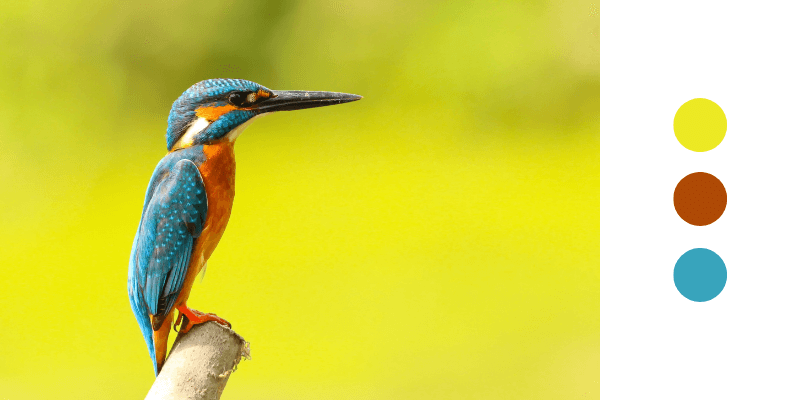Color is one of the most important tools an image editor has to work with. Colors can completely change a mood or provoke an emotional reaction in a viewer, but they’re also essential as practical elements of any image editing workflow.
Whether you’re trying to bring color into Photoshop from another design element or copy a color from an existing Photoshop document for use in another image, there are three easy ways to copy color from an image in Photoshop.
Table of Contents
Method 1: Using the Eyedropper Tool
The best way to copy a color in Photoshop is to use the Eyedropper tool. With your image open in Photoshop, select the Eyedropper tool from the toolbox or use the keyboard shortcut I (that’s “I” as in “indigo”, not a lowercase L!).
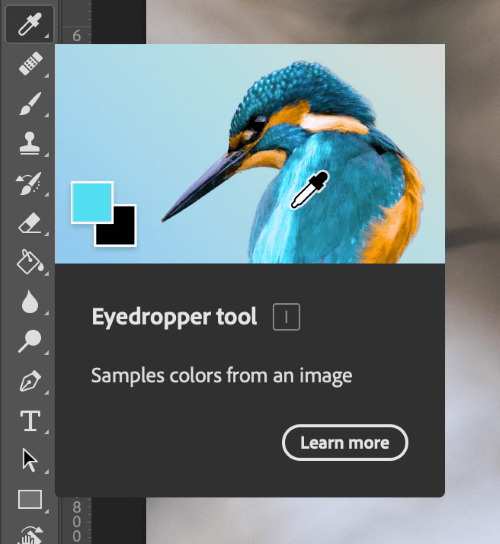
With the Eyedropper tool active, look at the Options panel above the main document window to customize how the tool works. The most important setting is the Sample Size option, which allows you to customize how the Eyedropper tool samples colors.
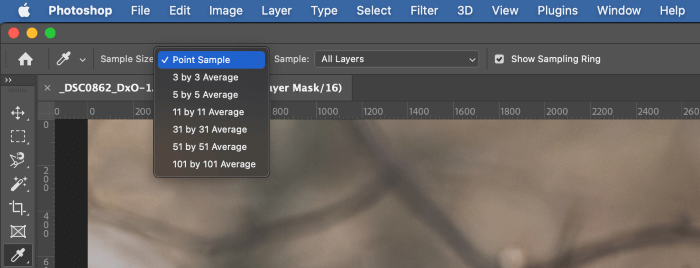
As you might guess, the Point Sample option restricts the copied color to a single pixel, but this doesn’t always copy a color properly.
It’s fine for simple graphics, but more complex images like photos often have significant color variation from pixel to pixel within a given color area, and your eye simply averages them out to create the final color that your brain recognizes.
You can achieve the same effect with the Eyedropper tool by adjusting the Sample Size setting to average the colors from a larger area, from a 3-pixel square all the way up to a 101-pixel square.
Once you’ve set the Sample Size option, the only thing that remains is to use the Eyedropper tool to click on the color you want to copy! Simply click anywhere in your image to copy the color of the clicked pixel (or group of pixels) into the foreground color swatch.
If you click and hold, you’ll see a preview ring pop up around the Eyedropper cursor, showing the color that will be selected when you release the mouse button.
This can be very useful when working with large Sample Size settings since it’s not always easy to estimate the final results over a 101-pixel square.
Don’t worry if you don’t get the exact color you want on your first try, however – you can simply click as many times as you want to copy a new color until you’re happy with the result.
It’s often a good idea to zoom in on your image before using the Eyedropper tool, as it can sometimes be hard to pinpoint the exact color that you want to copy.
Hold down the Option / Alt key and scroll up and down with the mouse wheel to zoom in and out, or hold down the Command / Ctrl key and use the + and – buttons on your keyboard to zoom in and out.
Method 2: Using Color Values
Because computers only see colors as numerical values, it’s also possible to copy a color in Photoshop using a color value.
If you click the foreground color swatch in the toolbox to open the Color Picker tool, Photoshop will show you the color values for your selected color in 5 different color spaces:
- HSB (Hue, Saturation, Brightness)
- RGB (Red, Green, Blue)
- L*a*b* (Lightness, Green/Magenta, Blue/Yellow)
- CMYK (Cyan, Magenta, Yellow, Key; typically, the Key color is black)
- # (Hexadecimal)
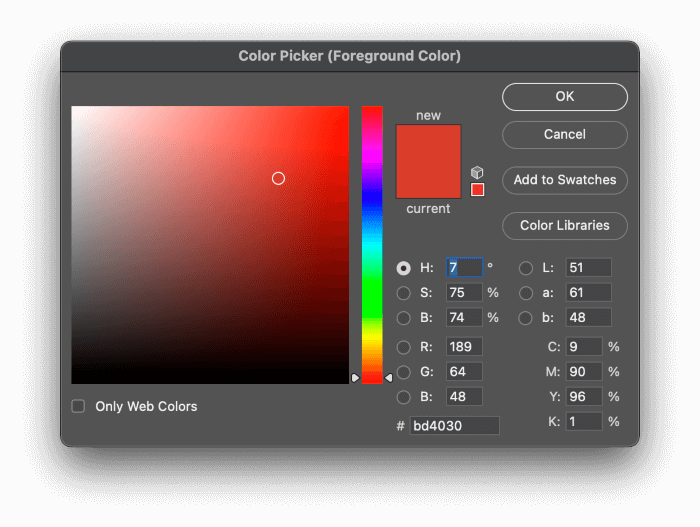
Note that you only need the numbers from one of these color spaces to copy the color, since they are all just different ways of describing the same color.
Working With Hex Colors
If you do any work in the world of web design, you’re probably familiar with the six-digit hexadecimal codes used to represent colors in web browsers. #000000 represents pure black, #ffffff represents pure white, while the blue used in the Photoshop Buzz logo is #5babfa, and so on.
Without getting overly technical, six digits are all it takes to recreate any color your browser can display. You can use these ‘hex codes’ to match your Photoshop graphics to the rest of your web design color scheme, or even copy colors from your images to use for other website elements.
To extract a hex code from an existing image that you have opened in Photoshop, switch to the Eyedropper tool, make sure the Sample Size option is set to Point Sample, and then click on the color you want to use. This will update the currently selected foreground color.
To see all the color values, simply click the foreground color swatch in the toolbox to open the Color Picker dialog window. Select the hexadecimal code (see below), copy it, and paste it directly into your CSS code in the appropriate spot.
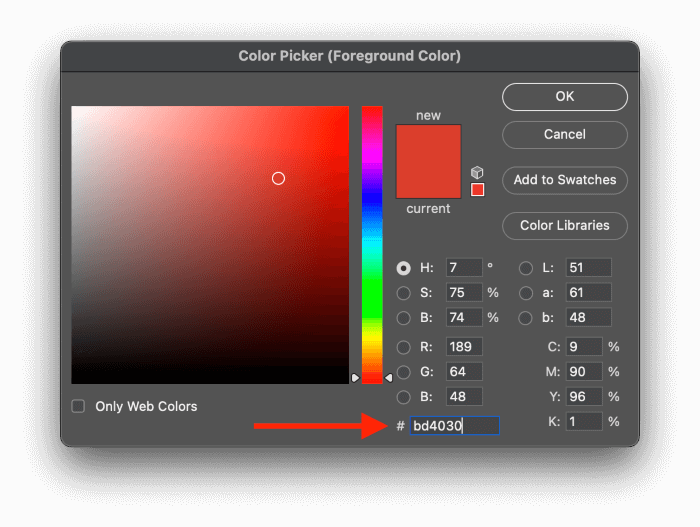
If you’ve already got a hex code and you want to use it in Photoshop, simply open the color picker by clicking the foreground color swatch in the toolbox, and replace the existing hexadecimal code with the one that you’ve been using in your web design CSS code.
The foreground color will update to match the code you enter, and you can begin using it in Photoshop!
Method 3: Using the Match Color Tool
If you want to match colors between two different photos that you’re combining in Photoshop, there’s a specialized tool known as the Match Color Tool that can help you create a smooth and seamless composite.
It allows you to copy the colors from your main image and apply them to your pasted image, although it uses a very different method from the Eyedropper Tool.
The Match Color tool is a bit too complex to cover properly in this tutorial, but my PhotoshopBuzz colleague Cara has written up a guide on how to match colors in Photoshop that you’ll find useful.
A Final Word
Working with color values isn’t always as fun as the dizzy heights of creative inspiration, but it’s a very useful skill if you want to be precise in your image editing. Getting familiar with the Eyedropper tool, the Color Picker, and the world of colorspace can provide a great foundation for your next project.
Happy coloring!
About Thomas Boldt